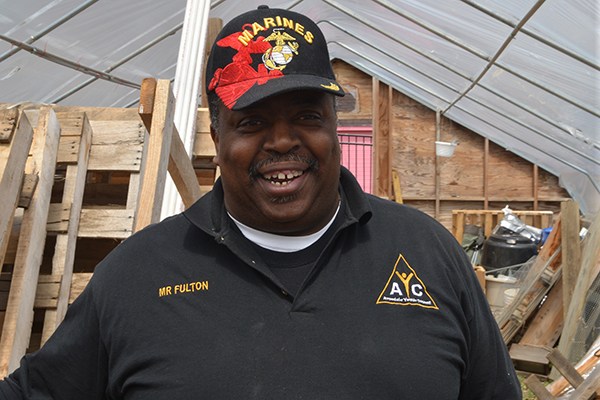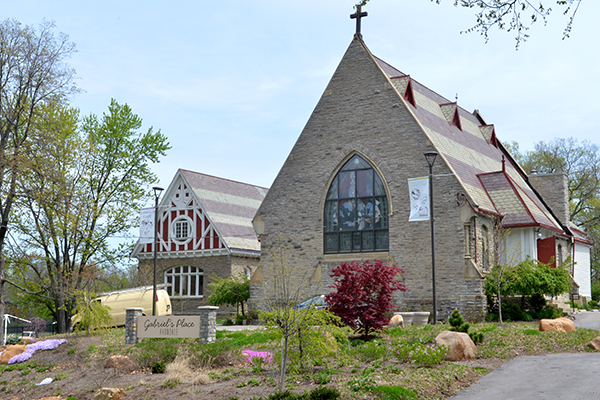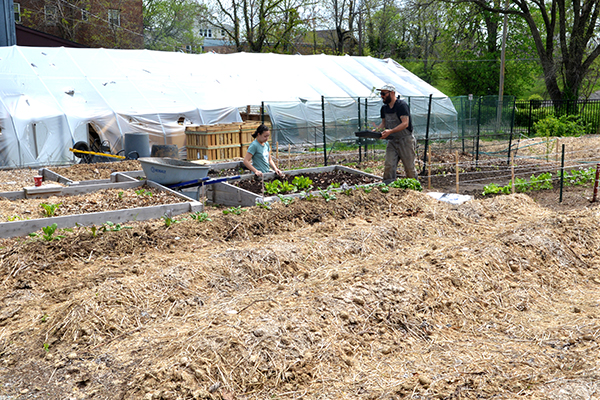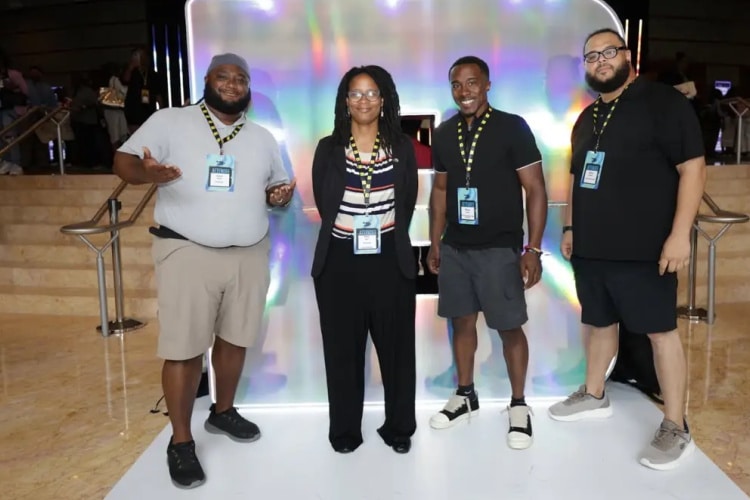Fulton Jefferson tries to make sure every kid counts in Avondale
Fulton Jefferson has been around long enough to witness Avondale's heyday and live through its decline. It still feels like a community full of possibility to him, so he pours his energy into the next generation of leaders through the Avondale Youth Council.
For the first half of the 20th Century, Avondale was a comfortable enclave for successful Cincinnatians. It was a predominately Jewish area with pockets of African-American residents and a thriving business district lining Reading Road.
Fulton Jefferson has been around long enough to witness Avondale’s heyday and to live through its decline. It still feels like a community full of possibility to him, but the past few decades have been hard on the neighborhood.
Born in 1957, Jefferson remembers the days when restaurants, a department store and car dealerships dotted Reading Road. His father had a good job, and his mother taught him to cook and encouraged him to prepare for his future. He and his siblings took advantage of the wealth of opportunities — churches, schools, community centers — that Avondale provided.
Today Jefferson is trying to provide opportunities for a new generation of neighborhood kids via the Avondale Youth Council, which he co-founded in 2006.
“Not everyone can be a part of the Youth Council,” says the former Marine Corps drill instructor. “They can’t deal with that much structure.”
The group fluctuates between 30 and 80 members. Many join, and if they can’t fall in line they quit.
But for those who stay, Jefferson provides them a safe place to be, good work to do and the discipline and structure they’ll need for future success.
20 years away, then back home again
In the early 1960s, when Jefferson was a toddler, poor residents were displaced from Cincinnati’s urban center to areas like Avondale, where the influx pushed many wealthier residents into suburbs and other city neighborhoods. Soon after, frustrations with economic injustice and then the assassination of Martin Luther King Jr. led to violent and destructive riots in 1967 and 1968. The business district never fully recovered.
Many of Avondale’s stately homes stood vacant for years or became multi-family residences or the parcels were divided for lower-quality infill developments. Left with insufficient infrastructure and amenities to support a healthy community, the neighborhood’s quality of life plummeted. By 2000, its poverty, unemployment and violent crime rates were among the highest in Cincinnati.
Jefferson left as soon as he graduated from Withrow High School, enlisting in the United States Marine Corps.
“I had a wrestling scholarship to go to college, but that’s not what I wanted to do,” he says. “I just couldn’t see going to school for another four years, then getting out and needing to find a job. And college would not have been structured enough for me.”
The Marines provided just the right amount of structure and excitement for Jefferson, who spent the next 20 years back and forth between deployments and short visits to Cincinnati. His positions as a communications chief and a drill instructor took him all over the world.
In the end, though, Cincinnati was home. When his military career was over, he landed back in Avondale, where his siblings and parents were still living.
“I did my 20 years and a day and got out (of the military),” he says. “I’m the oldest, so I had to come back to take care of the family.”
Jefferson tried starting a business when he returned in the late 1990s and wanted the support of the Avondale Community Council. What he found instead was that his hometown was plagued by bad relationships and broken bridges between residents, neighborhood leadership and the City of Cincinnati.
Residents were overlooked, he felt, and leaders didn’t take themselves seriously. Avondale simply didn’t command the respect he knew it deserved.
So Jefferson got involved in the Community Council, focusing on “fence-mending.” He partnered with a few other community leaders — notably Patricia Milton, William Witten and Ozie Davis III — to try to wrangle the fractured pieces of the neighborhood back into one cohesive, shared entity. They wanted Avondale back in control of its own future.
Milton has worked with Jefferson since those early years of his community leadership. She’s now president of the Avondale Community Council.
“Fulton and I work well together,” Milton says. “We have a mutual vision, plan and strategy to implement change in Avondale. Fulton is very familiar with the history of the neighborhood and has deep family roots. That family heritage drives him to want this community to thrive.
“Our leadership styles are different, but they complement each other. The end result is we have been able to work toward significant, sustainable change in Avondale.”
Youth Council takes on the future of Avondale
Jefferson’s resume is impressive these days, serving as vice president of the Community Council and of the Avondale Business Association, sitting on various boards and managing his own private business. His greatest contribution, though, is likely the Avondale Youth Council (AYC), which was created as a response to a community need.
Back in 2005-06, the Community Council had a hard time getting adult participation in their activities and volunteer events, though children were abundant. So Jefferson and Davis created the Youth Council as a way to get things done in the community while providing kids with positive work and socialization.
“Fulton recognized that true community change really starts with investing in our youth,” Milton says. “This foresight has been instrumental in grounding, encouraging and motivating many Avondale youth to participate in opportunities they would not have experienced.”
AYC members do things like visit Kings Island, see Reds games and climb to the Carew Tower observation deck. Some have even joined a rowing club and attended aviation or film school.
Beyond that, though, the Youth Council is not a social club or your average after-school program — it demands a high level of commitment and work from its members. This is where Jefferson’s military background is most evident.
AYC members wear a uniform, “a matter of discipline,” he says, “because most of the jobs (they) go to are going to require them to wear a uniform.” They call him “Mr. Fulton,” the name embroidered on his AYC polo shirt.
The youth are required to maintain a minimum GPA and attend a number of meetings each week, when they’re tutored in their school studies, take classes such as cooking or sewing and hear from visiting doctors, lawyers and businessmen about career possibilities in their future. They also serve as a reliable workforce for community improvement projects around Avondale, helping in the community garden, cooking in the kitchen at Gabriel’s Place, cleaning up illegal dumping and volunteering at various community events.
AYC members do get paid, but the rate is minimal: $5 an hour, with $2 of it going directly into a college fund that they can access if and when they graduate from high school.
Why such strict rules for membership? Jefferson explains that the youth in his community need more structure and support than they receive at home or at school. So he does what he can to fill the void where families and schools are lacking.
“How many other kids are being missed?”
Many of Avondale’s youth are falling behind, Jefferson says. Some have failing grades, and many are deficient in the skills they’ll need to succeed as adults.
When kids start to fall behind, they don’t always raise a red flag, he says, especially if they’re otherwise “good kids.” And parents don’t always have the time or resources to get to the root of the problem.
“In a low-income neighborhood with a single mom who has three or four kids, at about 11 of 12 the kids start fending for themselves,” Jefferson says. “Their parents are worried about other things.”
Jefferson tells the story of a Youth Council member who was failing in school. He was a good kid and slipped under the radar with his teacher because he wasn’t causing trouble. Then Jefferson found the reason for his failing grades: The boy couldn’t see well.
AYC members now receive medical, hearing, and vision screenings and are referred to professionals for developmental screenings, if needed.
“The nurses give them pre-tests here, and I bring in someone from Children’s Hospital to give them another test,” Jefferson says. “If they need glasses, she gives them a referral and then I get them down there to get glasses. It’s the same thing with hearing.
“Teachers are not paying attention to the kids (like that boy) who are having problems. That’s unacceptable. He’s only one kid, but if he was missed how many other kids are being missed?”
The boy with the bad eyes is now in college. He’s one of 18 AYC alumni who have graduated high school and headed off to college.
Another is Jasmine Humphries. She works as a AmeriCorps VISTA at LISC of Greater Cincinnati and Northern Kentucky, calling it her “dream job,” and says that being a member of the Avondale Youth Council made it possible.
“During my time as a youth in the AYC, I was exposed to all of the different organizations in the neighborhood, saw how they worked together and knew that we were going places,” Humphries says. “I was always told that Avondale needed me and that the future was in my hands. Hearing things like that as a youth really gives you a sense of purpose and obligation.
“I’m pretty sure that Ozie and Fulton had a grand vision for the AYC, but that vision doesn’t scratch the surface of what it has become today. It was originally intended to get Avondale youth out of the streets and give them leadership roles. … (It has) become a first-class incubator for community development professionals.”
Get them off the streets and prepare them to succeed
Fulton Jefferson will probably live in Avondale for the rest of his life, but he doesn’t intend to be in leadership forever. That’s the job of the Avondale Youth Council.
“That’s what we’re looking for,” he says. “We want to make them productive youth so they can be productive adults but then come back to the community and hopefully take (our) place.”
Jefferson knows that not every kid is college bound. Some kids would rather go into a different profession, like he did. That’s why he’s made it a point to expose the youth of Avondale to a variety of opportunities and possibilities for their future.
“All that stuff is what helped me later in life, and it’s the experience I had when I was younger that help me on,” he says. “A lot of these kids, if they don’t have that experience, they’re not going to make it.”
And sometimes they don’t. Recent news coverage is a sobering reminder that sometimes opportunity isn’t enough to give a kid a future.
Just a few weeks ago, Avondale buried one of its youth, Adaezia Flowers, a 20-year-old who was on her way to being another AYC success story. Instead, she found herself in the wrong place at the wrong time halfway across town.
“She was my (Youth Council) Secretary,” Jefferson says. “She was in school. If she wasn’t here (at the AYC), she wouldn’t have made it. She would have been on the street.”
Jefferson has been around long enough to know that turning around a community takes time and nothing is a sure bet.
“Some of them will get straightened out, some won’t,” he admits. “In the Marine Corps, I couldn’t keep all of them. Some didn’t make it. It wasn’t their cup of tea. … But that’s a part of the weeding out process.”
Jefferson counts 18 kids who made it, his 18 AYC alumni now in college. It might not seem like a lot but, in this new Avondale every kid counts.

















